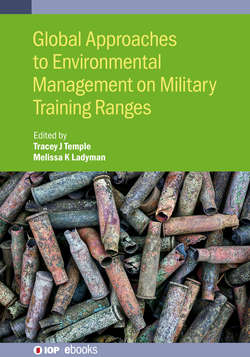Читать книгу Global Approaches to Environmental Management on Military Training Ranges - Tracey Temple - Страница 15
На сайте Литреса книга снята с продажи.
1.3 Behaviour of explosives in the environment
ОглавлениеIt is difficult to predict the behaviour of explosives in a particular environment due to the complex interactions between the contaminants, the soil and the climatic conditions. For legacy explosives and propellants such as hexahydro-1,3,5-trinitro-1,3,5-triazine (RDX), 1,2,4-trinitrotoluene (TNT), nitrocellulose (NC) and nitro-guanidine (NQ) (figure 1.4) the combination of historical contamination examples and research can be used to inform environmental impact. However, with the increasing demand for Insensitive Munitions (IM) it is likely that legacy munitions will be replaced by those containing Insensitive High Explosive (IHE) fills such as 2,4-dinitrotoluene (DNAN) and 3-nitro-1,2,4-triazol-5-one (NTO) (figure 1.4). It is important that the fate and transport of these explosives in the environment is understood before their widespread use to prevent any adverse environmental impacts. Therefore, the following sections summarise current understanding of the fate and transport of legacy and new generation explosives in the environment and their potential environmental impacts.
Figure 1.4. Structures of explosives discussed in this chapter: RDX, HMX, TNT, NQ, NC, DNAN and NTO.
